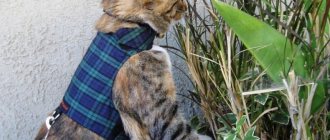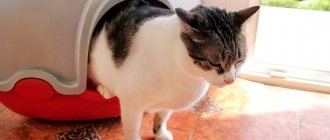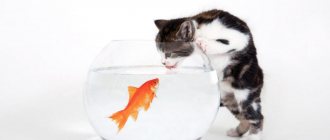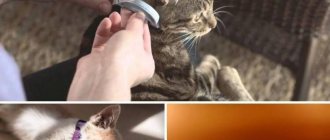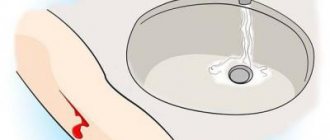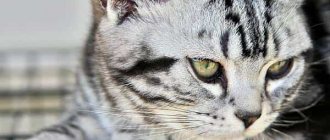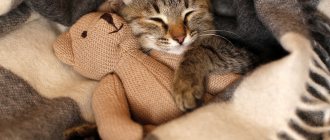Cats have always been considered energetic, active and agile animals. Now many of them spend months in their apartments, dreaming of frolicking in the fresh air. Some owners worry that the cat might get lost in a big city if they take it for a walk.
But there is a way out - you can buy a harness for cats in any store. A harness is a leash of a special design, thanks to which you can walk your pet without carrying it and not worry at all that it will run away. Cat harnesses come in different sizes and designs: the owner needs to choose the best option.
How to put a harness on a cat
It should be noted that this accessory should be comfortable for your pet so as not to cause anxiety or unnecessary excitement.
There are several basic steps that will help you correctly and correctly put a harness on your cat:
- It is necessary to let your pet sniff the harness and get used to it in order to avoid unnecessary anxiety.
- Before starting the process, it is important to pick up your pet and, if he appears anxious, pet him and calm him down.
- Do not make sudden, noisy movements, do everything carefully and calmly.
If these points are followed, the procedure will give the desired result and will not take much time. Next, we will look at various methods for collecting harnesses depending on their type.
First walk
First of all, it is worth remembering that there are several cases in which you should not go for walks:
• With kittens under 5 months (until this time the animal does not have strong immunity) and older, if vaccinations have not been done; • With old cats that have never been outside (this can negatively affect their health); • During the rehabilitation period after illness or surgery; • If the cat is very cowardly or too aggressive.
If all this does not apply to your cat, then for the first walk it is best to choose a quiet, secluded place where there will be no strangers, cats or dogs. This could be a park or a quiet courtyard. If such a place is far from home, it is better to carry the cat there in a carrier or in your arms. In the chosen place, carefully lower the animal to the ground. At first, the cat may sit still and fearfully look at the new space. There is no need to push her, she will decide for herself when she is ready to move on. Care should be taken to ensure that no one or nothing frightens the animal, otherwise this may discourage the animal from going for walks for a long time. Also, you should not try to force the cat to go where you want. At first it’s better to just follow her. And in the future, it’s worth coming to terms with the idea that it’s not you who walk the cat, but the cat who walks you. Very little time will pass, and such walks will bring a lot of pleasure to both you and your pet.
How to put a harness on a cat
How to assemble a cat harness
Depending on the configuration, temperament and breed of your pet, there are different variations of harnesses.
The main guiding factor is maximum comfort - it is important that the harness fits your cat and does not rub or squeeze the animal.
There are certain nuances when assembling different types of harnesses.
Eight:
- This accessory consists of parts. One part - a small loop is put on the cat's neck, it should slide over the animal's head, it does not need to be unfastened. The carbine ends up on the animal's back. The front paws are inserted into the second part - a large loop; it should go around the cat's chest. The loops can also be adjusted to make them wider or narrower.
- Next, you should put the smallest of the loops on the animal’s head. The junction of the loop and the connecting strap should be slightly above shoulder level. The middle of the figure eight should lie between the shoulder blades.
- You need to take the ends of the large loop that are located under the animal’s chest and connect them.
- It is important to ensure that none of the loops are twisted and become a source of irritation for your pet.
- It is necessary to check the fit of the belts. There should be 2 fingers between the harness and the animal.
- The leash must be fastened to the ring located in the animal’s back area, after which the harness itself is checked for strength.
Trixie with reflective stripes is the best option to buy
A comfortable nylon harness for cats with reflective stripes and a leash will not allow your pet to get lost even in the dark. Reflective elements are sewn into the fabric of the product, providing additional safety for your pet.
Product dimensions: 22×42 cm. The width of the strips is 1 cm. The cat leash is included in the kit and is connected to the harness with a reliable carabiner. The product is suitable for teaching cats discipline, visiting veterinary clinics and exhibitions.
- Plus: does not rub the animal's skin.
- Disadvantage: gradual training of the animal is necessary before use.
DIY cat harness
A photo of the V-harness is shown below:
- In order to correctly and competently make a harness for a cat with your own hands, you must initially take measurements of the pet: the circumference of the neck, as well as the chest, the length of the neck from the base of the head to the middle of the chest. The result will be two circles - a large and a small one and a line between them.
- Next we will need A3 paper, a pencil, a ruler and a centimeter. The length of the paper is determined by the size of the animal - it should be the same or slightly longer than the circumference of the cat.
- You also need to add 1 centimeter to the resulting measurements in the drawing to make sure that you have trimmed the fabric enough. This indentation will be the distance between the edge of the fabric and the stitches.
- Then you need to cut out the template and try it on the cat.
- The next step is to prepare the necessary material for making the harness. For this we will need: thick fabric (denim or cotton is recommended, as it is quite dense, soft and durable), lining, thread matching the color of the fabric, scissors, D-ring, protective fabric, sewn-on Velcro.
The protective fabric is used to strengthen the main fabric. It should be the same weight as the other type of fabric or less.
The ring should be wide enough to allow the nylon tape to pass through it freely. The length of the nylon strap itself should correspond to the middle circle of the vest. It is important to note that the thicker the tape, the more difficult it will be to sew.
To make a harness pattern we will need: a sewing machine, scissors, pins, an iron, a tape measure. If you don’t have a sewing machine in your arsenal, you can sew it yourself, but it will take a little more time.
Why are cat leashes necessary?
Roulette leash for dogs for walking large breeds
Not all cat owners know that their pets can be walked like dogs. Cats are usually kept as exclusively domestic animals, especially if the family lives in a metropolis, where there is no opportunity to let the cat go for an independent walk, as in the village.
However, these animals also love walks. They are not a necessary part of caring for a pet, but they can significantly diversify and brighten up a cat’s life, as well as add more opportunities for physical activity.
A cat on a leash can run and play safely during a walk.
To prevent the cat from running away while walking and to stay close to the owner, a cat leash is used. Walking a cat without a leash is also possible, but if it gets scared or something attracts its attention, the owner will have no control over the pet, and this can either lead to the animal getting lost or to more serious consequences if events occur, for example, near the roadway.
Important! In addition to walks, leashes and harnesses are also useful during trips to the veterinarian and various trips if owners do not have a special carrier.
Pattern of a harness for a cat
- It is necessary to cut out the fabric, lining and face protective fabric, then place the harness diagram on top of the cut out and attach with pins. It is important to remember to indent 1cm from the main measurements.
- Let's start sewing all the parts of the pattern. You should start from the wrong side, folding the edges. This is done to ensure that the seams are inside the vest. Next, you should align the edges relative to each other and stitch around the perimeter, then iron everything.
- On the part of the harness that will be located in the animal's back area, you need to sew a D-shaped ring. It should be threaded through the nylon tape with the rounded part facing out.
- Finally, we sew the Velcro to the harness. They should overlap each other; accordingly, we place part of the Velcro on the wrong side of the pattern, the other on the outside.
After the manipulations have been done, you should try on the resulting vest on the cat and check how it sits on it.
Wearing rules
Several conditions for wearing the structure must be observed:
- Heavy and voluminous collars should not be worn, as this will limit the animal’s movements too much.
- The size must be appropriate for the pet, for example, for a small kitten you need to buy or make a suitable cone.
- Cover sharp edges with electrical tape, adhesive tape, or tape, otherwise the cat may get hurt.
- Do not let your pet outside, it is unsafe.
- Make sure that the animal can easily reach the bowl of food and drink.
- If the pet refuses to eat, feed it by removing the collar.
- Inspect the skin under the collar while wearing it.
- Brush your pet, because because of the barrier he cannot groom himself.
- Provide free living space.
- Isolate from other animals.
- Wear until recovery, when the wound has completely healed and the veterinarian allows you to get rid of the collar.
You should put on the collar carefully, without making sudden movements; it is better to do this together
Photo of harnesses for cats
We add individuality
The harness can be decorated and thereby give it individuality. You can sew beads, beads or rhinestones onto a wide canvas. Models with ready-made stripes, which can be purchased at handicraft stores, look beautiful. You can choose “brutal” appliqués for cats, and cute hearts, bows and lace for your furry pets.
If you like to embroider, you can decorate the fabric of the harness with an interesting ornament, a cute image of a cat or the name of your pet. For ease of design, baste the canvas directly to the harness - its threads can then be carefully pulled out from under the embroidery upon completion of the work.
Master class on making an accessory
Like any handicraft, making a collar is a very exciting and interesting activity. We offer you a simple and easy process that will not take much of your time.
- First of all, choose the right fabric. It can be any color you like, but the main condition is that it must be dense.
- Prepare a fastener that is easy to use (we discussed their options above), a needle and thread. To decorate the collar, you can take beautiful stones, beads or beads, preferably the same size.
- Measure the volume of the cat's neck with a centimeter. From the selected material, cut a narrow strip, no more than 2 cm.
- Glue or sew pebbles onto the prepared base so that the distance between them is the same. Carefully attach the clasp so that the collar can be easily removed and put on at any time.
When choosing fabric for a collar, pay attention to the density of the material
Using this template, you can easily make a collar of any kind, giving free rein to your imagination. The main thing is to remember a few simple rules:
- Do not use very heavy jewelry. It will be uncomfortable for the cat to walk in a collar that bends it to the ground. It is better to decorate the product with fewer stones or beads.
- If you want to decorate the collar with ribbons, secure them so that they do not interfere with the cat's walking. Carefully secure the tape on all sides, otherwise it may unravel, blocking the cat's view, or, worse, get caught on something.
- When choosing material for a collar, pay close attention to its composition. Some types of fabrics can cause allergies in both humans and cats. Leather is considered the optimal material for a collar.
Tip: To find out if your pet is allergic to fabric, place the selected material near the cat for a while. If the animal does not react for a long time, you can use this fabric to make a collar with your own hands.
